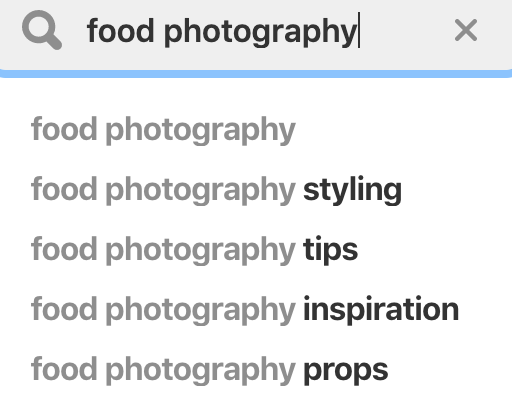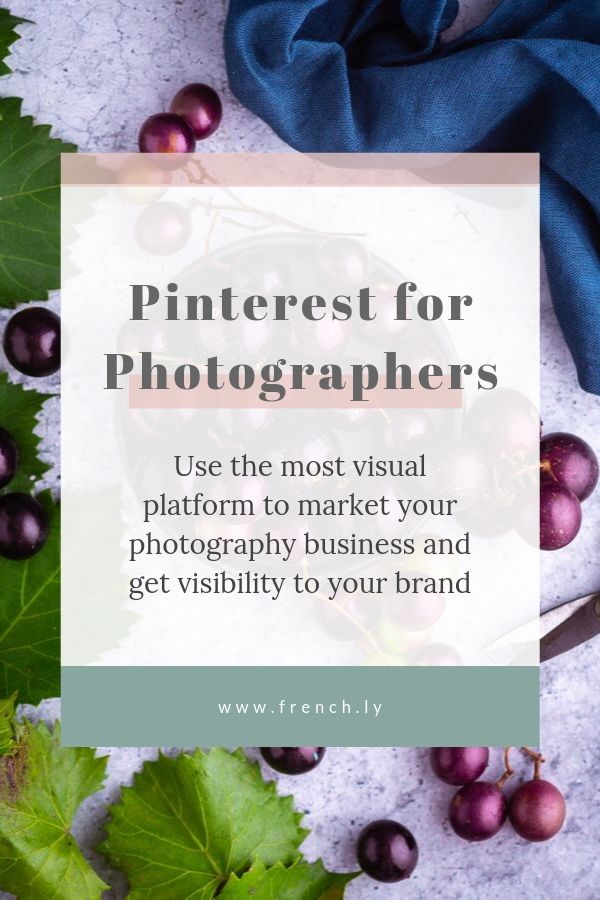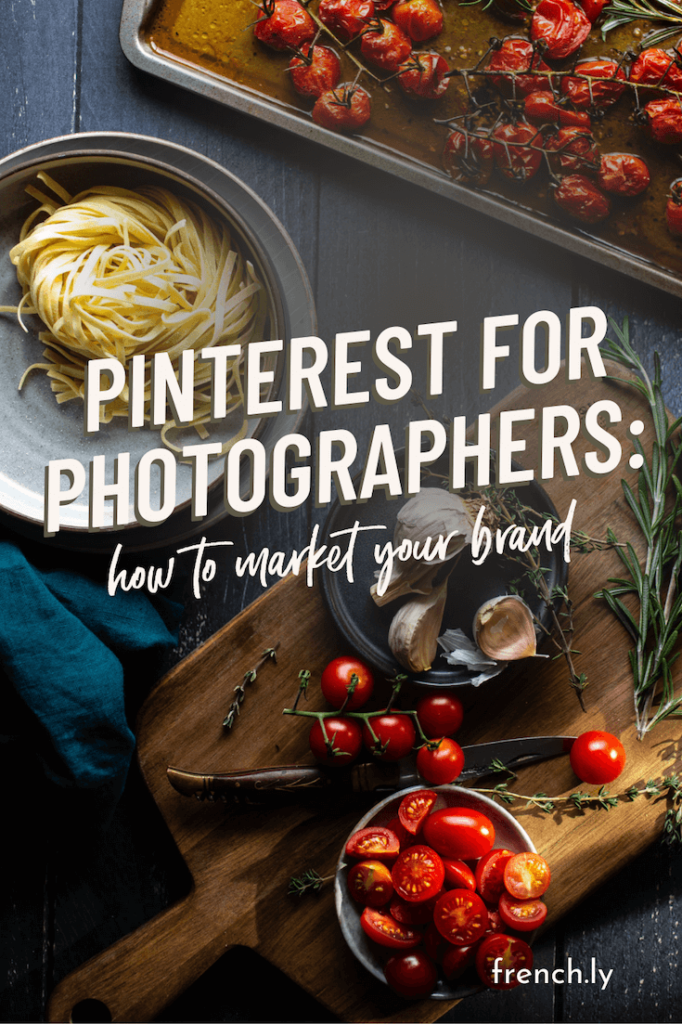In this guide, I show you how to choose who to pitch, how to find the right contact information, and how to craft a winning pitch.
PITCHING TO BRANDS AND IS THE BEST WAY TO GET YOUR IDEAL CLIENTS, AND YOU CAN DO IT WITHOUT FEELING ICKY
Gimme the Guide!
11 FOOD PHOTOGRAPHY DOCUMENTS EXPLAINED
Top Posts
11 PLACES TO SOURCE AFFORDABLE PHOTOGRAPHY PROPS AND BACKDROPS
30+ FOOD STYLING TIPS TO ELEVATE YOUR FOOD PHOTOGRAPHY
Free Resource
About Frenchly
I am a food + product photographer & educator specializing in eco-friendly and sustainable brands. When I am not working with clients, I empower creatives to start their journey by sharing my knowledge on the business of food + product photography.
Pinterest for Photographers: How to Market Your Brand
October 2, 2019
Please note – some of these are affiliate links, which means I’ll make a small portion of the profit if you purchase something, at no extra cost to you! Thanks for supporting us!
When people think about Pinterest, often they think of dream home boards and recipe ideas. I’ll be the first to admit I happily use it for both! But there’s a hidden power to Pinterest for photographers that professionals are just now starting to tap into, and today I’m letting you in on the secret:
Pinterest is not a social media platform.
Well, not really. Although it can be a great way to connect and share, Pinterest’s biggest draw is as a visual search engine. Think about it: you go to Pinterest with an idea of what you want, you do a search in that category, and when you see something you like you snatch it up. As such, it is a unique way to get your brand in front of people who actually want to interact with the things you offer. Then you can send them straight on to your website. That’s amazing!
The challenge for most people is understanding how to use Pinterest for photographers, because it’s not like any other marketing vehicle out there. Let’s take a look at some strategies I’ve had success with in my business and how you can get started with them today!
Keywords
Getting found on Pinterest is all about keywords. Use them in your board information, pin titles, and pin descriptions. Focus on the keywords you think people will look for (like on Google).
You can do a little research by doing a test search. Start with a basic keyword that fits very clearly with your pin (food photography for example). Use Pinterest’s autocomplete feature to see what keywords show up in the top results.

Use the autocomplete feature to find relevant keywords
Also look at Pinterest’s suggested keywords at the top of the page. You can get ideas for long tail keywords this way. Long tail keywords are often more like 2-3 word phrases, and when people use these they generally know exactly what they’re looking for.

Use Pinterest suggestions of relevant terms for long-tail keywords
Bonus: you can now use hashtags! Just type them into the description the same way you would on Instagram. Keep an eye on which hashtags are trending to maximize the potential here.
Strong Images
Like I said, Pinterest is a visual search engine. So no matter how appealing your title is or how high you rank in the search results, if your pins aren’t eye-catching, people just won’t click on them.
To promote my blog posts, I love to design custom graphics with Canva. I do this for two reasons: first, I can stay on-brand with the design by using the Frenchly color scheme and typography, making my pins instantly recognizable to loyal followers. Second, I can add text to the image itself. Since Pinterest-ers are generally looking at the image and not the title, I’m more likely to catch their attention this way.

If you are sharing blog posts or tutorials on Pinterest, make sure you use large text to get the attention of the people who are scrolling
For portfolio and Instagram pins, I like to let the image speak for itself. You’re promoting the image in this case, so don’t cover it up!
Group Boards
For more visibility, look for group boards. Your pins will have a chance to be seen by your followers and the followers from the other board members, increasing the potential visibility. You can tap into the social aspect of the platform and make some really relevant connections this way. It’s visual networking at its best!
Don’t be shy about asking to join groups. Everyone in that group had to do it at some point! If you’ve got a strong profile and relevant content, you’re sure to be a shoo-in. (And if you’re not, that’s probably not the group for you anyway.)
Planning Posts
Just like with any other form of content sharing, your Pinterest presence will require an investment of your time. You need to add content consistently and regularly to stay relevant. I am currently posting 10 to 15 pins a day. It sounds like an insane number, but stay with me here.
I can actually pin 2-3 weeks worth of content in under an hour. It’s just a matter of setting aside regular, dedicated time to seek it out. Pinterest is my main source of visitors to my blog, so it is totally worth it for me.
It’s so much easier than it sounds! I use Tailwind to plan my pins, so whenever I come across something interesting on the web I add it to Tailwind and move on with my day. The browser extension makes it easy for me to find content and save it without interrupting my workflow.
Tailwind also has something called Tribes. Tribes are a way to partner up with other Pinterest accounts and share each other’s content. It’s a powerhouse for sharing and finding great content, and a great opportunity to put all that networking we talked about earlier to good use.
Knowing What to Share
Another roadblock photographers run into on Pinterest is what to share.
If you have a blog, this one is a no-brainer: just share your blog posts! If you don’t, it can get a little trickier. But don’t fret, there are many other things you can share on Pinterest that can lead people to your web presence.
- You can share images from Instagram — and we all know how much I love Instagram! You can create many boards on Pinterest and pin your Instagram posts to the relevant ones. Then create a “my Instagram” board to keep it all in one place. Also, link your pins to any of your IGTV content, or even your Story Highlights!
- You can also pin images directly from your portfolio to attract clients. They may run across it while looking to book a photographer for their next food or product photography shoot. I recommend creating a ‘Portfolio’ board where you can share your work, as well as sharing it to relevant boards (like sharing a veggie salad to a board dedicated to vegetarian cooking)
- If you sell products like ebooks, templates, or presets, you can create pins on Canva to send people directly to your products.
- If you sell services, you can do that too! Create a pin on Canva and send people to your service page. What a great way to get traffic to your website!
- Share some curated content from other accounts that would be useful to your ideal client. You can have inspiration boards for each type of image (flay lay, tablescapes, and process shots for example) or food (cakes, cookies, salads). I have boards for drinks, baking, vegan food, and so many more. You can also create secret boards that you share with your clients and use them as mood boards (if you would rather create them on Canva, you can get my free mood board template here)
So you see, there are many things you can share on Pinterest to drive traffic to your website or Instagram!
Pinterest has come a long way in the past few years, and it is now a powerful photography marketing tool. Now you know how to get started with making connections, driving traffic to your web presence, and scheduling engaging content without wasting hours every day, so go get started!
It’s a big platform and they’re rolling out new functionality all the time. So keep your eye on this platform because it’s going places! If you see something I didn’t talk about or want to know more, let’s keep the conversation going. Comment on Instagram, join my email list, or leave a comment below!

Leave a Reply Cancel reply
| Created with Showit
| Design by Oregon Lane Studio
| Privacy Policy
© 2020 Frenchly Photography
Back to Top
THE WEBSITE
THE BLOG
Helping brands and businesses promote a happy, healthy and sustainable lifestyle through stunning food and product photography